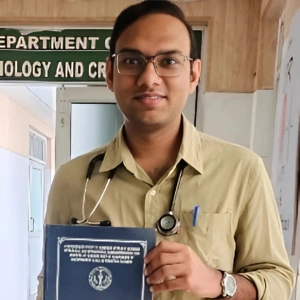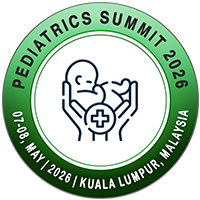
Rahul Gupta
Uttar Pradesh University of Medical Sciences, IndiaPresentation Title:
A randomized study to compare efficacy between intranasal and intravenous dexmedetomidine for removal of foreign body in oesophagus at cricopharynx level in paediatric patients
Abstract
Background: Foreign body ingestion in children aged six months to three years causes significant morbidity and mortality. This study compares the efficacy of intranasal (IN) versus intravenous (IV) dexmedetomidine as an adjunct to propofol, for removing foreign bodies at the cricopharynx level in pediatric patients.
Materials and method: In this prospective, double-blinded, randomized study, 80 patients (aged one month to 12 years, ASA PS I and II) with a foreign body in the esophagus at the cricopharynx level undergoing endoscopic foreign body removal were randomly allocated into groups A and B, with 40 patients each. In the preoperative area, Group A received 3 mcg/kg dexmedetomidine intranasally, and Group B received 3 mcg/kg intravenously over 10 minutes. Sedation onset was assessed using the Ramsay Sedation Scale (RSS), aiming for an RSS score of 3+ before transferring to the operation theater. Propofol was administered (2 mg/kg) for induction. The Parent Separation Scale was used to evaluate anxiolytic effects. Perioperative pain, heart rate (HR), oxygen saturation (SpO2), ECG, and blood pressure (BP) were monitored throughout.
Results: Group A's mean time to the operation theater (33.8 ± 5 minutes) was significantly longer than Group B's (10.7 ± 2.1 minutes, p = 0.001). Group B achieved higher RSS at 10 and 20 minutes. Group B had lower pain scores at 10 minutes (2.2 ± 1.4, p ≤ 0.001), but Group A experienced longer postoperative pain relief (1.35 ± 0.94 for 120 minutes, compared to 1.94 ± 0.35 in Group B, p = 0.002). Group B showed sharp hemodynamic decreases, while Group A's changes were gradual and persistent.
Conclusion: Intranasal dexmedetomidine is a safer, more effective sedation method for removing esophageal foreign bodies at the cricopharynx level in pediatric patients, providing stable hemodynamic parameters and prolonged postoperative pain relief compared to intravenous administration.
Conclusion: Intranasal dexmedetomidine is a safer, more effective sedation method for removing esophageal foreign bodies at the cricopharynx level in pediatric patients, providing stable hemodynamic parameters and prolonged postoperative pain relief compared to intravenous administration.
Biography
Dr Rahul Gupta completed his MBBS from UPUMS,
Saifai, India, and currently, he is pursuing an MD in Anaesthesiology from
UPUMS, Saifai, India. He is a junior resident in the Department of Anaesthesia
and Critical Care at UPUMS, Saifai.

